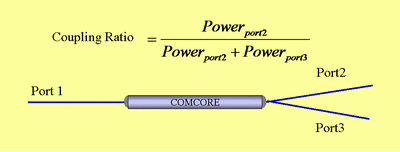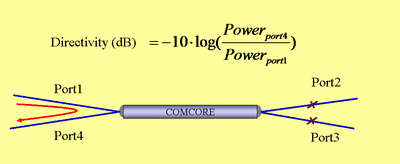Welcome to Comcore Optical Intelligence Website
- AC Fiber Optic Current Sensors
- AIS Unbalance Current Sensors for DC Filters and Capacitors
- AIS Unbalance Current Sensors for AC Filters
- Fiber Optic Current Sensors for DCB
- Fiber Optic Current Sensors for GIS
- Flexible Fiber Optic Current Sensors
- Fiber Optic Current Sensors for GIS
- All-Fiber Current Sensing Coils
- Integrated Current Transformer Calibration Platform
- Pulse Current Measuring Instrument
- Super-large DC Fiber Optic Current Sensors
- Lightning test system
- Comcore PFS-500 & PFS-500S Universal PM Fiber Fusion Splicer
- Comcore Universal PM Fiber Fusion Splicer
- 1x2(2x2) Compact Fused Hybrid PM Fiber Tap
- 1x2(2x2) Fused Hybrid PM Fiber Standard Tap
- 1x2(2x2) Polarization-Insensitive Fused PM Fiber Splitter (Mixer)
- 1x2 980/1064nm Fused PM Fiber Standard WDM
- 980/1035nm Single Mode Fiber WDM
- 1310/1490/1550nm Single Mode Fiber WDM Module
- 1x2 (2x2) 635/1064nm Single Mode Fiber WDM
- 1x2(2x2) Single Mode Dual-Window Broadband Splitter
- Star & Tree Single Mode Broadband Splitter Module
- High Power 1x2(2x2) Single Mode Broadband Splitter
- 1x2(2x2) 105/125µm Multi-Mode Broadband Splitter (Mixer)
- 1x2(2x2) 400/440µm Multi-Mode Broadband Splitter (Mixer)
- 1x2(2x2) 50/125µm Multi-Mode Broadband Splitter (Mixer)
- 1x3(3x3) 105/125µm Multi-Mode Broadband Splitter (Mixer)
- 1x4(4x4) 105/125µm Multi-Mode Broadband Splitter (Mixer)
- 1x4(4x4) 50/125µm Multi-Mode Broadband Splitter (Mixer)
- 14xx Four-Channel Wavelength Pump Combiner
- 14xx Three-Channel Wavelength Pump Combiner
- 14xx Two-Channel Wavelength Pump Combiner
- RGB Three-Channel Wavelength Combiner
- RB GB RG Two-Channel Wavelength Combiner
- 2x1 Multimode Pump Combiners
- 3x1 Multimode Pump Combiners
- (1+1) x1 PM Pump and Signal Combiners
- (2+1) x1 PM Pump and Signal Combiners
- (18+1) x1 PM Pump and Signal Combiners
- Nx1 High Power Laser Combiner
- 1064nm Polarization Maintaining Isolator
- Polarization-Insensitive Optical Circulator
- Polarization Maintaining Isolator
- 1064nm Polarization Maintaining Optical Circulator
- 1064nm Polarization-Insensitive Isolator
- Polarization Maintaining Isolator
- 1x2 (2x2) Plastic Fiber Splitter (Mixer)
- 1x3 (3x3) Plastic Fiber Splitter (Mixer)
- 1x4 (4x4) Plastic Fiber Splitter (Mixer)
- 1x7 (7x7) Plastic Fiber Splitter (Mixer)
- SM-MM Broadband Converter
- Thermal Expanded Single Core Fiber
- Fiber Optic Bundles
- Mode Field Adaptor
- SM Fiber Patch Cords
- Clade Power Stripper
- All-fiber current sensor flexible ring
- 1x2(2x2) Polarization-Insensitive Fused Hybrid PM Fiber Tap
- 1x3 Fused Hybrid PM Fiber Standard Tap
- 1x3 Polarization-Insensitive Fused Hybrid PM Fiber Tap
- 1x2(2x2) Mini Fused PM Fiber Splitter (Mixer)
- 1x2(2x2) 400um Fused PM Fiber Standard Splitter (Mixer)
- 1x2(2x2) Compact Fused PM Fiber Splitter (Mixer)
- 1x2(2x2) Compact Polarization-Insensitive Fused PM Fiber Splitter
- Fused PM Fiber Standard Splitter (Mixer)
- 1x2(2x2) 2000nm Fused PM Fiber Splitter (Mixer)
- 1x2(2x2) Polarization-Insensitive Fused PM Fiber Splitter (Mixer)
- 1x2 Polarization-Insensitive Fused PM Fiber Broadband Splitter
- 1x2(2x2) Polarization-Insensitive Dual-Window PM Fiber Splitter
- 1x2(2x2) Ultra-Low Ratio Fused PM Fiber Splitter (Mixer)
- 1x3 Fused PM Fiber Standard Splitter
- 1x3 Polarization-Insensitive Fused Hybrid PM Fiber Splitter
- 1x3 Polarization-Insensitive Fused PM Fiber Splitter
- 1x3 33:33:33 Fused PM Fiber Broadband Splitter
- 3x3 Fused PM Fiber Standard Splitter (Mixer)
- 3x3 Polarization-Insensitive Fused PM Fiber Splitter (Mixer)
- 1x4(2x4) & 1x8(2x8) Fused PM Fiber Splitter Module
- 125μm PM Fiber Optic Polarizer
- 80μm PM Fiber Optic Polarizer
- Fiber Optic Depolarizer
- 1x2 980/1310nm Fused PM Fiber Standard WDM
- 550nm Fused PM Fiber Standard WDM
- 1550nm Fused PM Fiber Standard WDM
- 1x2 1310/1550nm Fused PM Fiber Standard WDM
- 1480/1550nm Fused PM Fiber Standard WDM
- 532/635nm (450/532nm) Fused PM Fiber WDM
- Pization-Insensitive 980/1030nm Hybrid PM Fiber WDM
- Polarization-Insensitive 980/1030nm Fused PM Fiber WDM
- Polarization-Insensitive 980/1064nm Hybrid PM Fiber WDM
- Polarization-Insensitive 980/1064nm Fused PM Fiber WDM
- Polarization-Insensitive 980/1310nm Hybrid PM Fiber WDM
- Polarization-Insensitive 980/1310nm Fused PM Fiber WDM
- Polarization-Insensitive 980/1550nm Hybrid PM Fiber WDM
- Polarization-Insensitive 980/1550nm Fused PM Fiber WDM
- 1x1 Fused PM Fiber Attenuator
- PM Fiber Standard Combiner
- 980/1064nm Single Mode Fiber WDM
- 980/1310nm Single Mode Fiber WDM
- 1064/1310nm Single Mode Fiber WDM
- 1064/1550nm Single Mode Fiber WDM
- 1310/1490nm Single Mode Fiber WDM
- 1310/1550nm Single Mode Fiber WDM
- 1480/1550nm(1480/1590nm) Single Mode Fiber WDM
- 1550/1625nm Single Mode Fiber WDM
- 980-20 Fiber 980nm/C or L Band WDM
- 980-20 Fiber 980nm/C+L Band WDM
- 980-16 Fiber 980nm/C or L Band WDM
- 980-16 Fiber 980nm/C+L Band WDM
- Hybrid (Dissimilar) Fiber 980nm/C or L Band WDM
- 1x2(2x2) 200/220µm Multi-Mode Broadband Splitter (Mixer)
- 1x2(2x2) 62.5/125µm Multi-Mode Broadband Splitter (Mixer)
- 1x3(3x3) 50/125µm Multi-Mode Broadband Splitter (Mixer)
- 1x3(3x3) 62.5/125µm Multi-Mode Broadband Splitter (Mixer)
- 1x4(4x4) 50/125µm Multi-Mode Broadband Splitter (Mixer)
- 1x4(4x4) 62.5/125µm Multi-Mode Broadband Splitter (Mixer)
- Star & Tree 50/125µm Multi-Mode Broadband Splitter Module
- Star & Tree 62.5/125µm Multi-Mode Broadband Splitter Module
- 4x1 Multimode Pump Combiners
- 7x1 Multimode Pump Combiners
- 19x1 Multimode Pump Combiners
- (1+1) x1 Pump and Signal Combiners
- (2+1) x1 Pump and Signal Combiners
- (6+1) x1 PM Pump and Signal Combiners
- (6+1) x1 Pump and Signal Combiners
- (18+1)x1 Pump and Signal Combiners
- 4 Port 1064nm Polarization Maintaining Optical Circulator
- 4 Port Polarization-Insensitive Optical Circulator
- Polarization Maintaining Tap Isolator
- Polarization-Insensitive Isolator
- Fused Single Mode Fiber Tilt Filter
- MM Fiber Patch Cords
- 980/1310nm Single Mode Fiber WDM
- 80/165μm 980-20 Fiber 980nm/C or L Band Compact WDM
- 1310/1550nm WDM Module with High Isolation
- 1550/1625nm Single Mode Fiber WDM
- 1x2(2x2) Compact Single Mode Broadband Splitter
- 1x2(2x2) Compact Single Mode Narrowband Splitter
- 1x2 PDL-Free 50/50 Broadband Splitter
- 1x2(2x2) Single Mode Allwavelength-Broadband Splitter
- 1x2(2x2) Single Mode Broadband Splitter
- 1x2(2x2) Single Mode Narrowband Splitter
- 1x2(2x2) 405nm(450nm) Single Mode Narrowband Splitter
- 1x2(2x2) Single Mode Triple-Window Broadband Splitter
- 1x2(2x2) Single Mode Ultra-Broadband Splitter
- 1x2(2x2) 1310nm(1550nm) Single Mode Ultra-Broadband Splitter
- 1x2(2x2) 1055nm(1064nm) Single Mode Broadband Splitter
- 1x2(2x2) 850nm (830/780nm) Single Mode Broadband Splitter
- 1x2(2x2) Ultra-Low PDL Broadband Splitter
- 1x2(2x2) Ultra-Low PDL Narrowband Splitter
- 1x2(2x2) Ultra-Low Splitting Ratio Taps
- Star & Tree Single Mode Dual-Window Broadband Splitter Module
- Star & Tree Single Mode Narrowband Splitter Module
- 1x3 Single Mode Broadband Splitter
- 1x3 Single Mode Dual-window Broadband Splitter
- 1x3 Ultra-Low PDL Narrowband Splitter
- 1x3(3x3) 80μm Fiber Single Mode Narrowband Splitter
- 1x3(3x3) Single Mode Narrowband Splitter
- 1x4 Single Mode Broadband Splitter
- 1x4 Single Mode Dual-Window Broadband Splitter
- 1x4 Single Mode Narrowband Splitter
- 1x5 Single Mode Broadband Splitter
- 1x6 Single Mode Broadband Splitter
- 1x7 Single Mode Broadband Splitter
- 1x8 Single Mode Broadband Splitter
- 1x8 Single Mode Narrowband Splitter
- 2x4 Single Mode Narrowband Splitter
- 4x4 Single Mode Narrowband Splitter
- Fused SM Fiber Attenuator
- 1x2(2x2) 80μm Fiber Single Mode Narrowband Splitter
- 1x2 (2x2) Ultra-High Reliability Single Mode Narrowband Splitter
- 2x2 50/50 Single Mode Narrowband Splitter
- Star&Tree Single Mode Dual-Window Broadband Splitter Module
- 1x2(2x2) 80μm Fused PM Fiber Splitter
- 980/1550nm(980/1590nm) Single Mode Fiber WDM
- PM Fiber Patch Cords
- 1x2(2x2) Single Mode C/L Band Broadband Tap
- 1480/1550nm(1475/1558nm) Single Mode Fiber WDM
- 1x3 Single Mode Narrowband Splitter
- 1x2(2x2) Mini Single Mode Broadband Splitter
- 1310/1550nm High Temperature Single Mode Fiber WDM
- 1x2(2x2) High Temperature Single Mode Broadband Splitter
- High Power 980nm/C Band WDM
- 1x2(2x2) High Temperature Single Mode Narrowband Splitter
- 45° Oblique End-face Lensed Fibers
- 8° Oblique End-face Lensed Fibers
- Wedge Cylindrical Lensed Fibers
- Oblique Wedge Lensed Fibers
- Tapered Spherical Lensed Fibers
- Fused Tapered Lensed Fibers
- Long Focus Lensed Fibers
- Biconical Optical Lensed Fibers No data


Sales Tel:
+86 13901783908
+86 15721079078

















